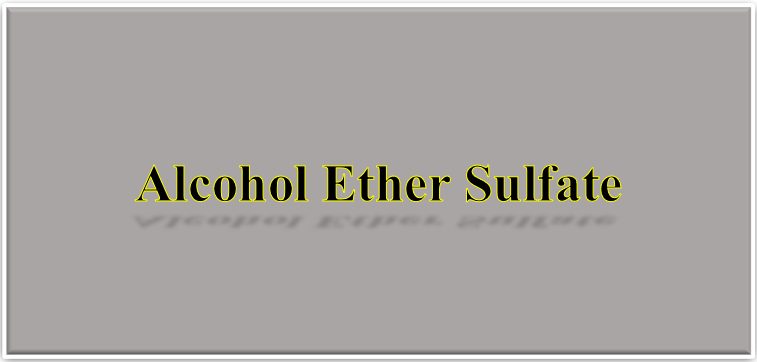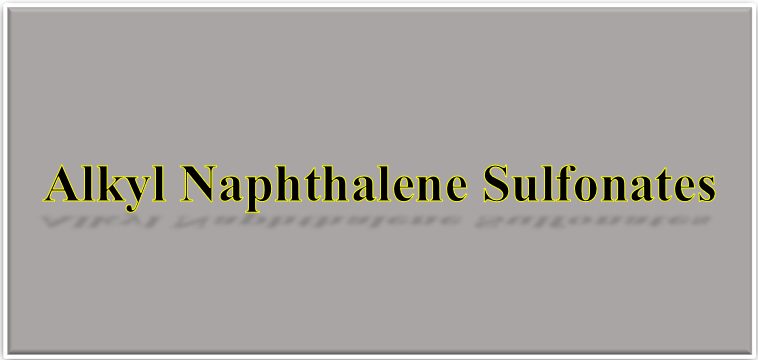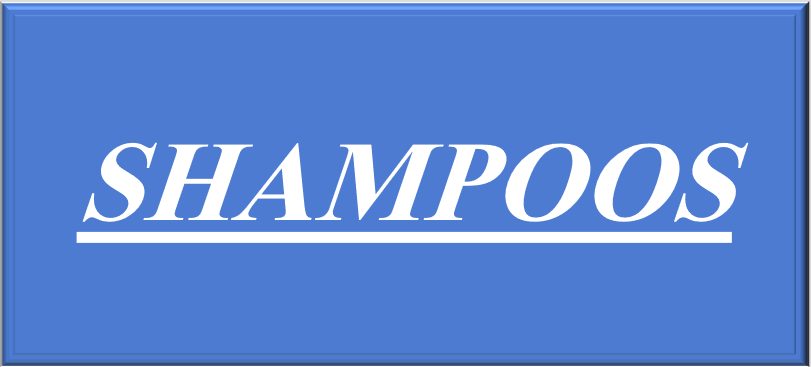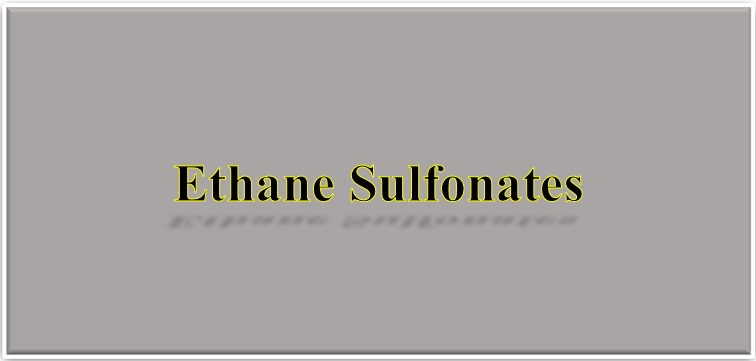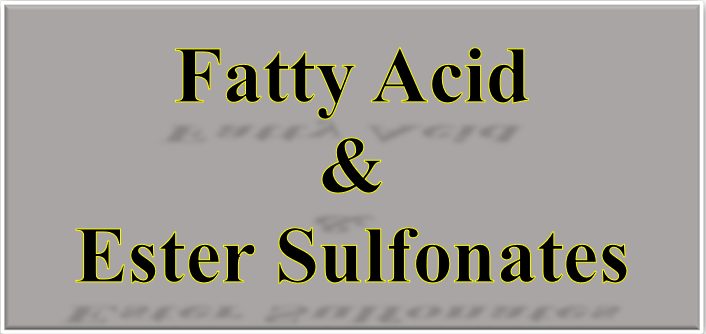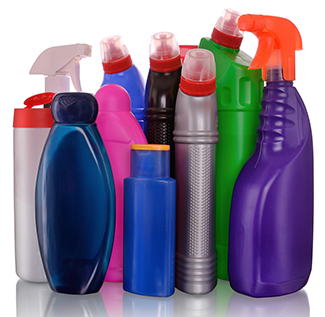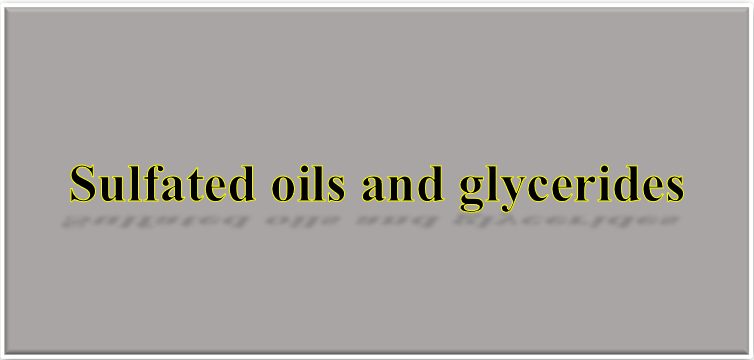General
Alcohol ether sulfates (AES)
Ether sulfates
Description
These products are made by the sulphation of ethoxylated alcohols using sulfur trioxide/air on continuous plants. It is possible to
make AES in batch reactors with sulfur trioxide injection but colors are generally very poor. The generic formula is RO(CH2CH2O)nSO4 where R is a hydrocarbon radical, usually linear, and n is 2 or 3, although there are a few specialty products with n in the range of 4-10. The sodium, magnesium, and ammonium salts are readily available from many manufacturers where n is 2 or 3. Practically all products are based on natural or synthetic alcohols with 10-15 carbon atoms. The ranges available are: 27-29% active, aqueous, based on the sodium or ammonium salts, viscous liquids; 60% active, aqueous/alcoholic, based on the ammonium salts, liquids; 65-70% active, aqueous, based on the sodium salts, mobile gels
General properties
Solubility
The presence of polyethylene oxide (a water-soluble group) confers improved solubility on ether sulfates, compared to alcohol sulfates. When mixed with alcohol sulfates. ether sulfates improve the solubility. Unlike alkyl sulfates, the ether sulfates have cloud and clear points below 0°C.
Compatibility with aqueous ions
Stable to hard water; both the 2-mole and 3-mole ethoxy sulfate have excellent lime-soap dispersing properties due to the calcium salt being soluble (calcium lauryl sulfate is insoluble).
Chemical stability
Hydrolysis in aqueous solution at acid pH and high temperatures (not suitable for use above 50°C) but less so than alcohol sulfates; ammonium salts are more stable than sodium at pH just less than 7 but needs to be kept at below pH 7 at all times during processing; even at neutral pH, hydrolysis may be initiated by autocatalytic acidification; this can be prevented using phosphate or citrate buffers.
Viscosity behavior of aqueous solution
Very similar to alcohol sulfates in giving gels in the 30-60% concentration range, whilst being liquid above and below that concentration; thus, diluting a concentrated solution of say 65% can first lead to very large increases in viscosity, and hence to gels; where minimum formulation viscosity is required at maximum activity, then selection of a higher degree of ethoxylation is preferable.
Thickening aqueous solutions
Ether sulfates show a pronounced salt effect, i.e. addition of sodium chloride to a dilute solution will give an increase in viscosity; the quantitative increase in viscosity is different for each ether sulfate and can even vary from batch to batch of apparently the same product.
Thinning aqueous solutions
Alcohols, normally ethanol can reduce the viscosity of ether sulfate solutions; isopropanol is very effective but can give odors in the final products.
Functional properties
Excellent detergents, do not show loss of detergency in brine or hard water (unlike AS or LABS) and therefore can be used unbuilt (no polyphosphates); detergency is enhanced by addition of magnesium salts; the good solubility characteristics make them specially useful for use in alkaline and phosphate built liquid formulations, where they can improve the aqueous solubility of other less polar surfactants; excellent emulsifiers (particularly for sebum); excellent foaming agents particularly in the presence of electrolytes, the foam is lighter compared to alkyl sulphates, more open and collapses more readily in the presence of grease and oils; in general, ether sulphates do not give stable foams in the presence of sebum (unlike alkyl sulphates which do give stable foam in the presence of sebum), but the addition of sarcosinates, betaines or alkanolamides can stabilise the foam in the presence of sebum; the C12 hydrophobe is claimed to give better foaming properties than the C14; products from different manufacturers with apparently very similar compositions can often vary significantly in foaming performance; This is mainly due to differences in the ethoxylated alcohol feedstocks; the presence of C9, C10 and Cll as alcohol sulphates are likely to depress foaming performance.
Disadvantages
Hydrolytically unstable.
Applications
General
The sulfated ethoxylated alcohols began to replace alcohol sulfates in hand dishwashing and as shampoos in the 1950s on the basis of improved solubility, foaming, hard water tolerance of foam, better build of viscosity with salt, and decreased irritation to eyes and skin.
Household products
Three-mole ether sulfate used as foam stabilizer/detergent in dishwashing liquid; major component of low temperature or low phosphate content heavy duty fabric laundry liquids and powders; carpet shampoos; hard surface cleaners; chlorphenolic disinfectant concentrates.
Shampoos and cosmetics
Shampoos, bubble baths, liquid soaps, and shower gels are the main applications; the 2-mole ether sulfate is usually used in shampoos to give a stable voluminous foam (without alkanolamide) when the level of sebum is not high; 3-mole ether sulfates produce excellent ‘flash’ foam, less stable and more open than the 2-mole ether sulfates and more suitable for foam baths and washing up liquids; cleansing properties and viscosity building abilities fall off as the amount of ethylene oxide increases. On the other hand, increasing ethoxylation gives reduced eye and skin irritation; products with EO up to 12 are used in shampoos as a mild foaming and cleansing agent and also as a detoxifying agent; also have good solubilizing properties.
Oil field chemicals
Three-mole ether sulfates are used as a foaming agent in foam drilling where tolerance to salt and hard water is important but has limited temperature stability.
Gypsum board production
Foaming agent with tolerance .to high concentrations of calcium ions.
Emulsion polymerization:
Emulsifying agent for rubber latices.
Specification
| Active content | 27-28% or 60-70% |
| Unsulphated material | typically 3-8% (on 100% active) |
| Color | high sulfated material gives good colors whilst low unsulphated material gives poor colors |
| pH | can show pH drift, i.e. pH changes with time |
| Sodium sulfate | 0.5-3% |
| Sodium chloride | up to 0.05% |
| Ethyl alcohol | 10-15% (on 60% active ammonium salt) |
| l,4-dioxane | 500 ppm (on 100% active) |

